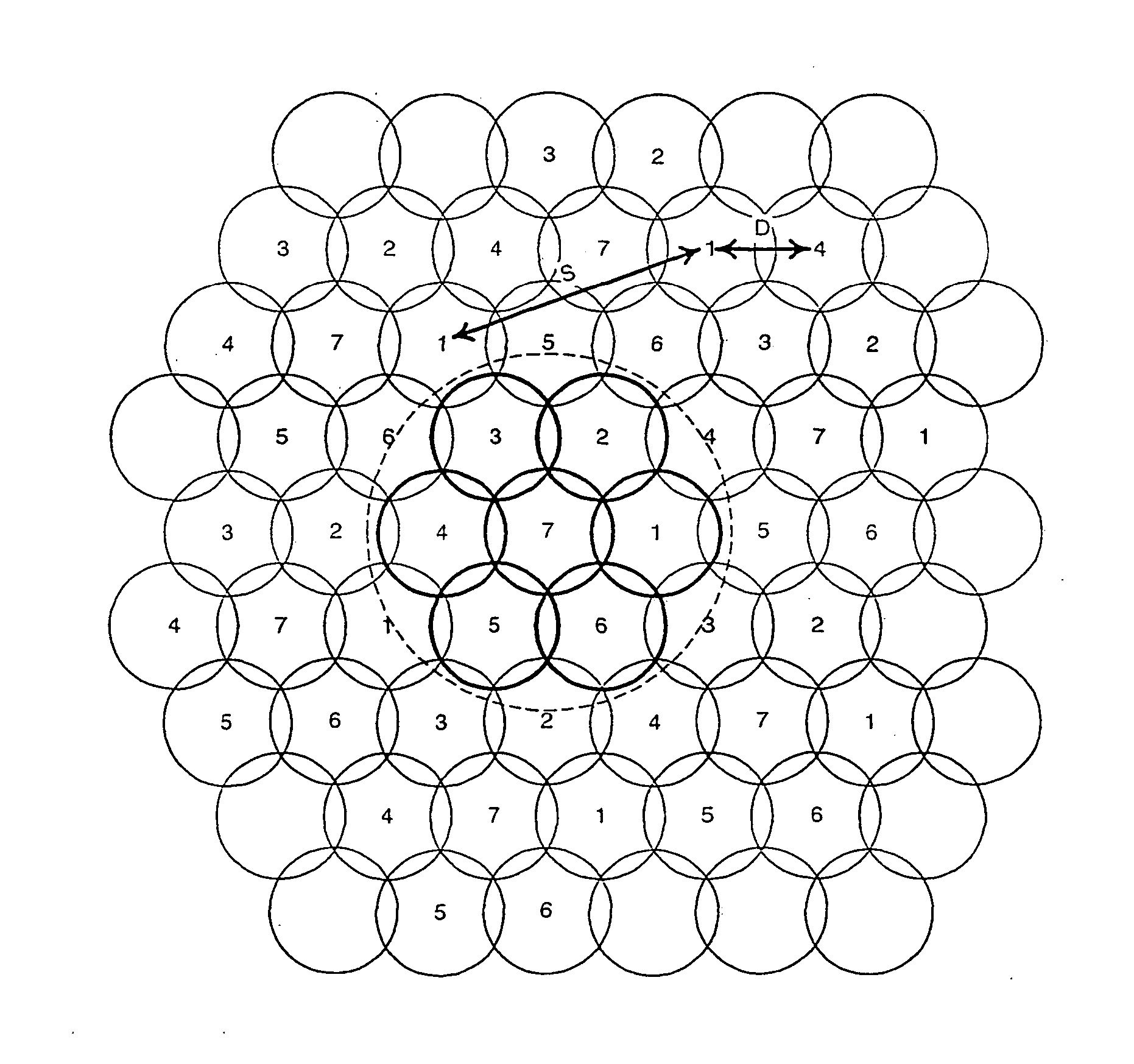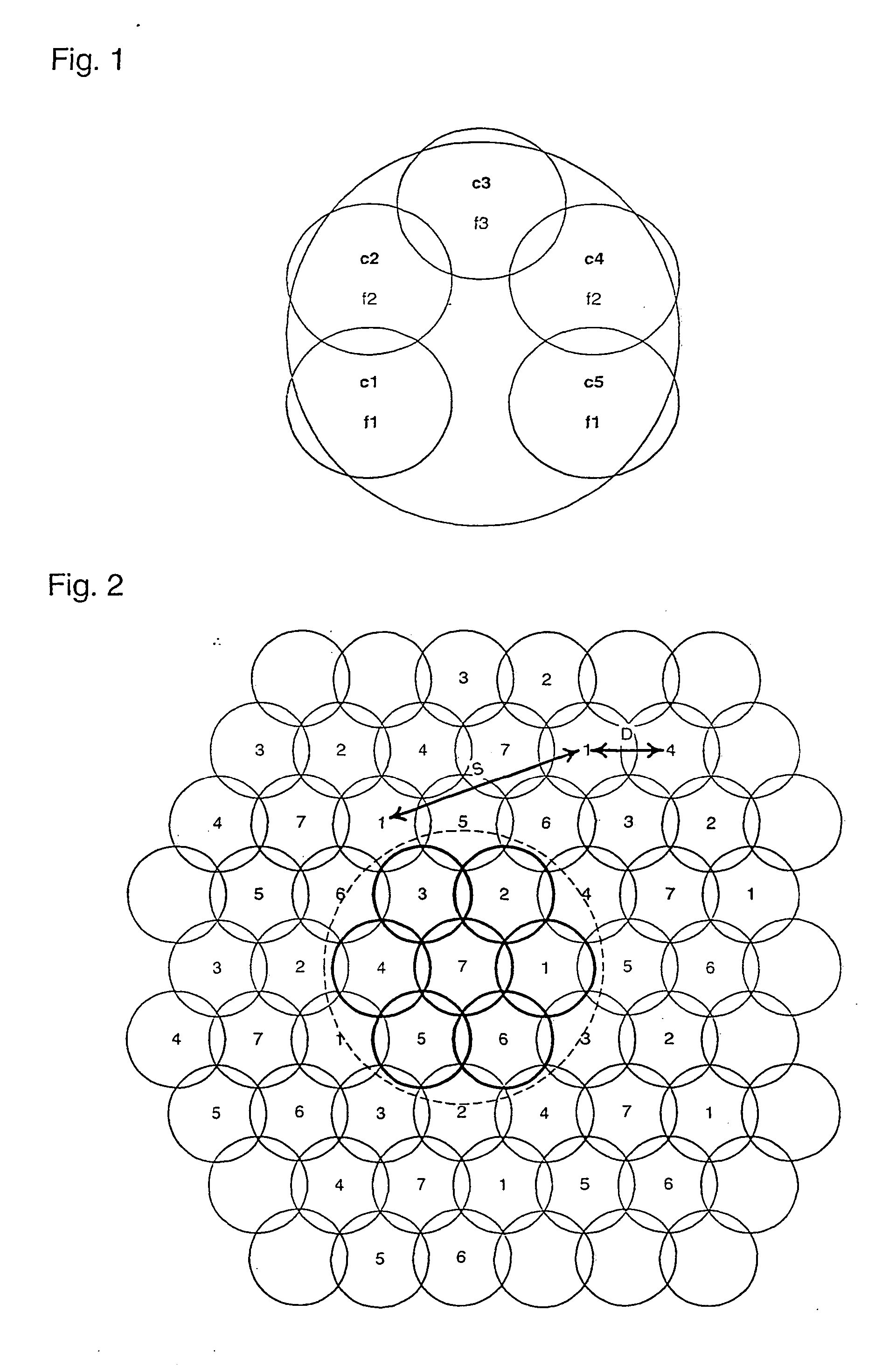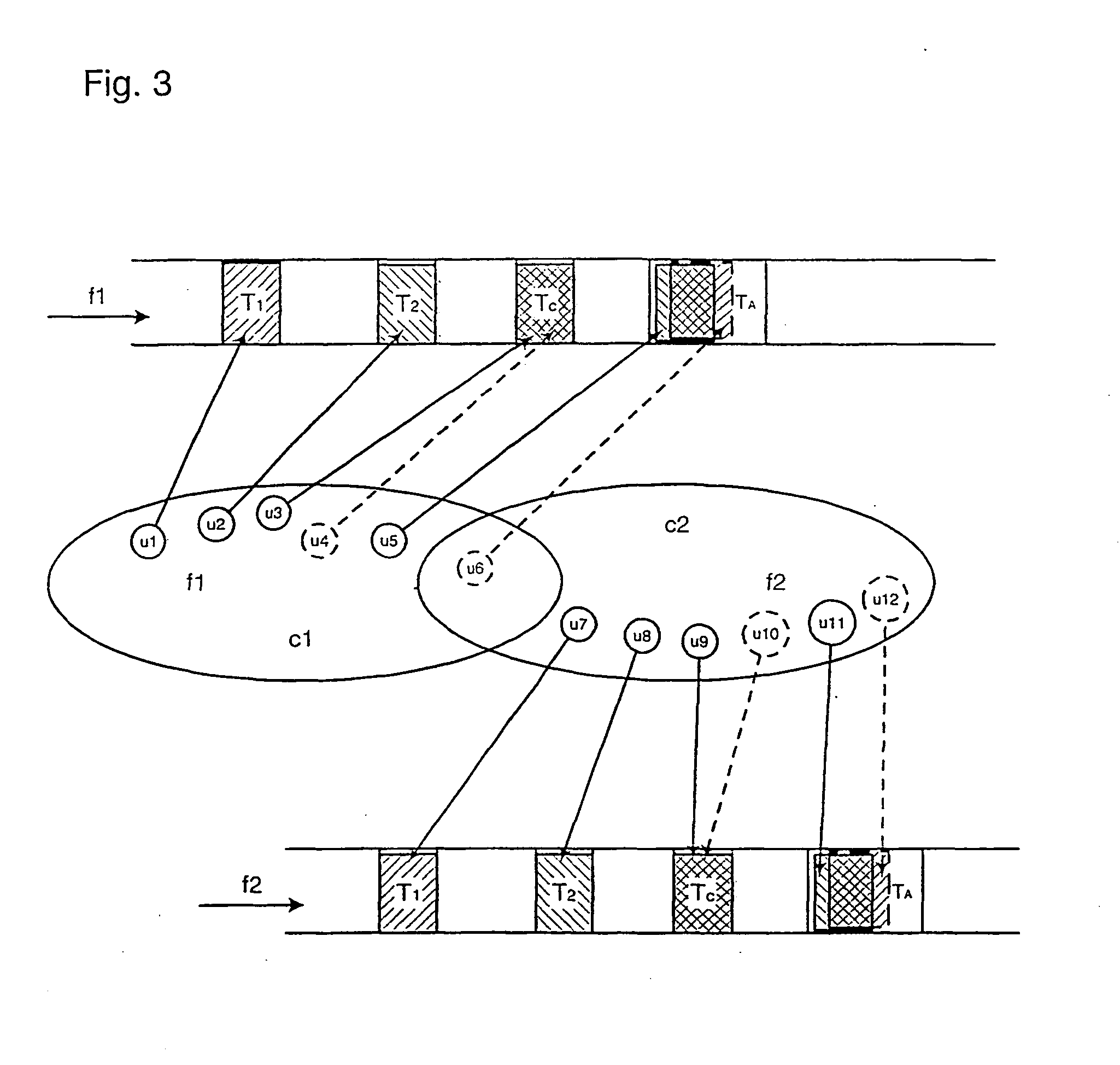Cellular channel allocation scheme with multi-user detection
- Summary
- Abstract
- Description
- Claims
- Application Information
AI Technical Summary
Benefits of technology
Problems solved by technology
Method used
Image
Examples
first embodiment
[0034]FIG. 6 shows allocation of time slots to user terminals at frequencies f1 and f2 of a frequency pool shared within a two-cell cluster C in the present invention. The time slots include uniquely assigned time slots T1 and T2, contention-based time slots Tc and initial access time slots Ta. User terminals u1 and u2 in cell c1 are allocated slot T1 at frequencies f1 and f) respectively. User terminals u3 and u4 are allocated the contention time slot Tc at frequencies f1 and f2 respectively. User terminals u5 and u6 attempt initial access in the initial access slot Ta in frequencies f1 and f2 respectively. Likewise, user terminals u7 to u12 use exclusive, contention-based and initial time slots at the frequencies f1 and f2.
[0035] As well as giving improved frequency reuse, the sharing of a pool of frequencies within a cluster gives greater flexibility in the loading of each bearer according to capacity demand from all the user terminals in the cluster, rather than from user termin...
second embodiment
[0038] A greater improvement in the efficiency of spectrum use is obtained in the present invention, in which return link time slots in each bearer may be simultaneously assigned to one user terminal in each cell of a cluster. If there are n cells per cluster, each time slot of each shared bearer may support up to n simultaneous users. A receiver of the transmissions in each time slot receives a signal from each cell, each signal comprising up to n overlapping transmissions. Using the differences between the signals received from the different cells and applying multi-user detection techniques, the receiver separates and decodes each of the overlapping signals. Successful separation and decoding of the overlapping signals requires that the receiver is capable of separating the necessary number it of overlapping signals.
[0039] The technique of the second embodiment is applicable to unique timeslot allocation, except that the time slot is only exclusively assigned to a user terminal t...
PUM
 Login to View More
Login to View More Abstract
Description
Claims
Application Information
 Login to View More
Login to View More - R&D
- Intellectual Property
- Life Sciences
- Materials
- Tech Scout
- Unparalleled Data Quality
- Higher Quality Content
- 60% Fewer Hallucinations
Browse by: Latest US Patents, China's latest patents, Technical Efficacy Thesaurus, Application Domain, Technology Topic, Popular Technical Reports.
© 2025 PatSnap. All rights reserved.Legal|Privacy policy|Modern Slavery Act Transparency Statement|Sitemap|About US| Contact US: help@patsnap.com



